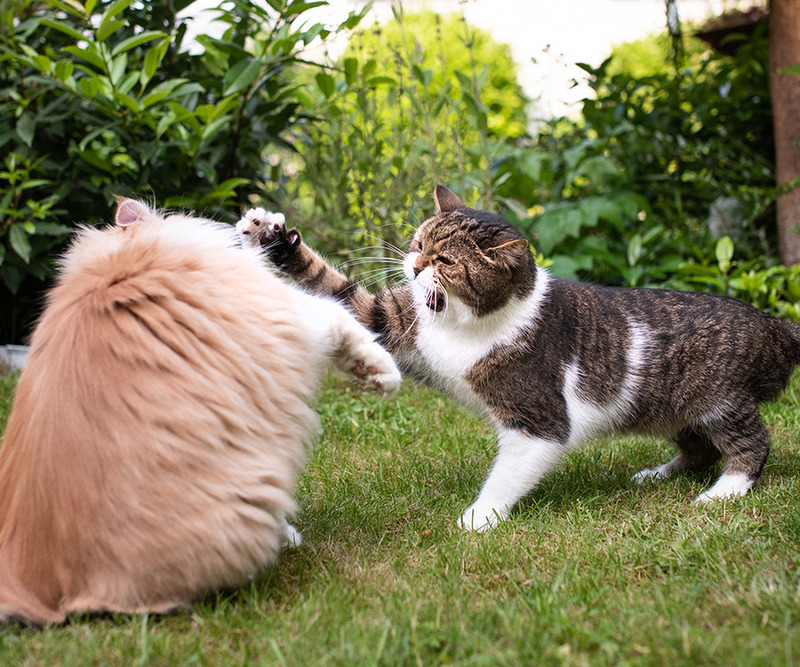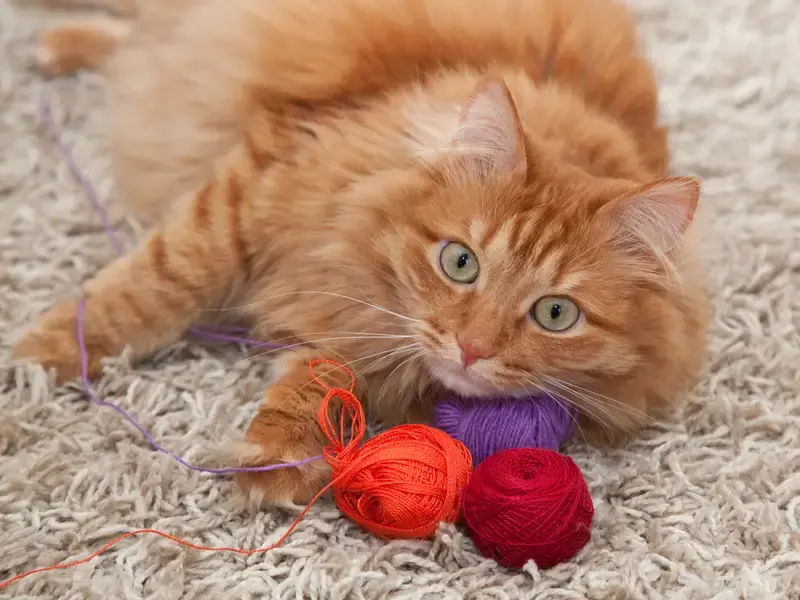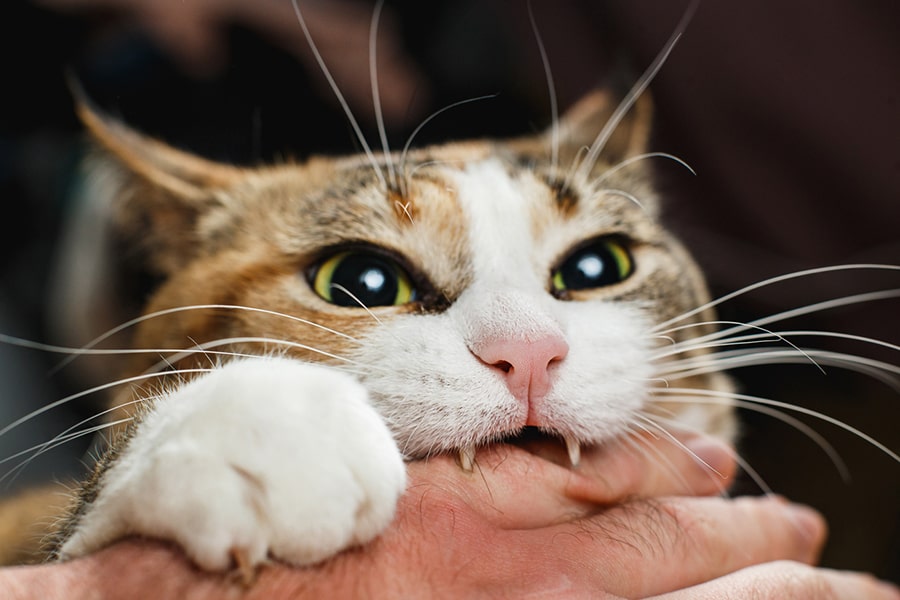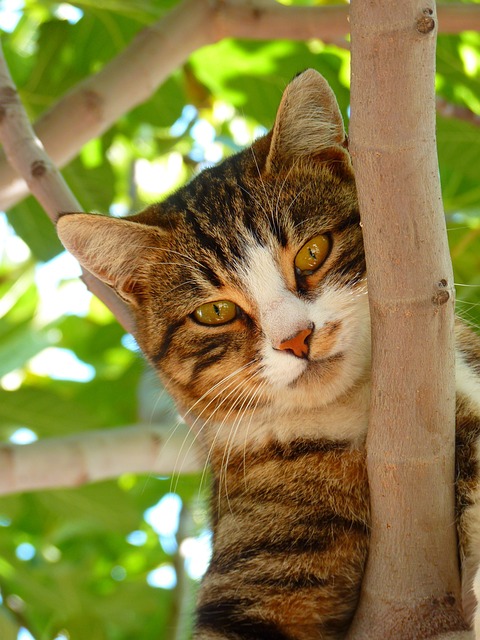Cats are beloved companions, known for their playful antics, affectionate nuzzles, and sometimes mysterious behavior. However, many cat owners encounter a challenge: aggression. Aggressive behavior in cats can be alarming, uncomfortable, and even dangerous. Understanding the causes, signs, and solutions for aggression is key to ensuring a harmonious relationship between you and your feline friend.
Understanding Aggressive Behavior in Cats
Aggression in cats can take many forms, including hissing, growling, swatting, biting, or scratching. While it may seem sudden or unpredictable, aggression is often a form of communication, triggered by stress, fear, illness, or environmental factors. Recognizing the root cause is crucial to effectively managing and reducing aggressive behavior.

Common Causes of Aggression
Fear and Anxiety
Fear-based aggression in cats often occurs when they encounter unfamiliar stimuli, such as a new person, animal, or loud noise, or when they experience something they associate with unpleasant events, like a visit to the veterinarian.Cats displaying fear aggression may exhibit certain signs: ears flattened against their heads, hissing, baring their teeth, crouching low to the ground with their tail tucked beneath them, and fur standing on end.The most effective way to manage fear aggression is to identify and avoid triggers whenever possible. When avoidance isn’t feasible, gradual desensitization can help: expose the cat briefly to the fearful stimulus from a safe distance, and reward calm, non-aggressive behavior with treats or praise.
It is crucial not to comfort an aggressive cat, as this may be interpreted as encouragement of the behavior. Similarly, do not retreat or show fear, since this could reinforce the aggression if the cat seeks a reaction. Often, the best approach is to ignore the aggressive behavior and provide attention only when the cat is calm.
Pain or Illness
When cats are in pain, they may act aggressively to protect themselves. This can mean hissing, scratching, or biting when touched or moved, especially around sore spots. For example, cats with arthritis might resist having their joints handled. Sometimes, even after the pain has gone, a cat may remain wary of being touched in certain areas because it remembers the discomfort.
To help a cat with pain-related aggression, avoid handling painful areas and work with your veterinarian to find the best plan to manage their pain. With the right care, your cat can feel more comfortable and less likely to act out.
Territorial Behavior
Cats are naturally territorial and may show aggression toward newly introduced cats—or occasionally other animals or people—that enter their established space. Sometimes, even resident cats who have been away, such as during a hospital stay, can be targeted. Territorial aggression often involves swatting, chasing, or attacking the perceived intruder.
The key to managing territorial aggression is patience and gradual introductions. Start by confining the new or returning cat to a separate room with its own litter box, food, and water. After a few days, allow the aggressive cat into the room for about 30 minutes while the other cat remains in its space. Then, return both cats to their respective areas. Repeat this process daily for several days.
Next, place the cats on opposite ends of the same room, either in carriers or on harnesses with leashes, so they can see and smell each other without direct contact. Offer food to create a positive association with the other cat’s presence. If either cat refuses to eat, increase the distance between them and try again. Gradually reduce the distance over several days until both cats are comfortable.
Once they are acclimated to each other, allow them to be in the same room at a distance while feeding. If any aggressive behavior occurs, return to the restrained feeding method until both cats remain calm.
This process can take weeks or even months, depending on the cats involved. In some cases, a veterinarian may recommend medication to help manage aggression, but this should always be combined with gradual desensitization.
Never place your hands or body between fighting cats, as serious injury can occur. Using barriers—such as baby gates or panels made of cardboard, light wood, or plastic—can effectively separate aggressive cats and prevent harm.
Play Aggression
Play aggression occurs when cats engage in biting, swatting, or pouncing during play, often targeting hands, feet, or other moving objects. While this behavior is normal for kittens learning to hunt and develop coordination, it can become problematic if directed at humans or other pets. Signs of play aggression include dilated pupils, flicking tails, ears tilted back, and sudden bursts of energy. To manage this behavior, it’s important to provide appropriate outlets for your cat’s hunting instincts, such as interactive toys, wand toys, or laser pointers, and to avoid using your hands or feet as play objects. Redirecting aggressive play toward toys and rewarding calm behavior helps your cat learn acceptable ways to express energy and engage in play safely.
Boredom or Frustration
Aggression due to boredom or frustration happens when cats have excess energy or lack mental and physical stimulation. A cat confined to a small space, left alone for long periods, or denied access to play and exploration may become irritable, lashing out at people, other pets, or objects. Signs include pacing, vocalizing, swatting, or attacking without clear provocation. To prevent this type of aggression, provide regular interactive play sessions, climbing structures, scratching posts, and puzzle toys that challenge their mind and keep them engaged. Ensuring your cat has opportunities for exercise and enrichment helps reduce frustration and channel energy in positive ways.
Redirected Aggression
Redirected aggression occurs when a cat becomes aroused by a stimulus but cannot respond directly, causing them to take out their frustration on a human or another pet. Common triggers include loud noises, spotting an outdoor or stray cat through a window, or conflicts between cats inside the home. Sometimes, a cat may even redirect aggression toward a person following an aggressive encounter with another indoor cat.
To prevent redirected aggression, it’s important to remove or minimize the triggering stimulus. This can include closing window shades, using deterrents to keep stray cats away, or managing interactions between indoor cats to avoid confrontations.
Signs of Aggressive Behavior in Cats
Recognizing aggression early can prevent injury and reduce stress. Common signs include:
- Hissing, growling, or spitting
- Flattened ears and dilated pupils
- Swatting, scratching, or biting
- Tail lashing or flicking rapidly
- Avoiding eye contact or sudden charging
Solutions for Managing Aggression in felines
1. Create a Safe Environment
In order to treat aggressive behavior, you need to provide hiding spots, elevated perches, and safe spaces where your cat can retreat when stressed. A calm environment reduces fear-based aggression.
2. Address Health Issues
If aggression appears suddenly, consult a veterinarian to rule out pain or illness. Treating underlying health problems often reduces aggressive behavior significantly.
3. Avoid Physical Punishment
Never hit or yell at a cat. Physical punishment increases fear, stress, and aggression. Positive reinforcement is far more effective.

4. Use Positive Reinforcement
Reward calm and desirable behaviors with treats, affection, or play. Gradually, your cat learns that non-aggressive behavior leads to positive outcomes.
5. Provide Mental and Physical Stimulation
Interactive toys, puzzle feeders, climbing structures, and regular playtime help channel energy into healthy activities and reduce boredom-driven aggression.

6. Gradual Socialization
Introduce new pets or people slowly, allowing your cat to adjust. Avoid forcing interactions, which may trigger territorial or fear-based aggression.
7. Consult a Cat Behaviorist
Persistent or severe aggression may require professional help. In that case a behaviorist can assess triggers, create a customized plan, and train both you and your cat for safer interactions.
Prevention Tips
- Maintain a consistent routine to reduce stress
- Use pheromone diffusers to create a calming atmosphere
- Encourage gentle play, avoiding hands or feet as toys
- Observe and respect your cat’s personal space and signals
Conclusion
Aggressive behavior in cats is a complex issue with multiple causes, ranging from fear and illness to boredom or territorial instincts. By understanding the underlying triggers and employing positive strategies, cat owners can minimize aggression, improve safety, and strengthen the bond with their feline companions. Patience, observation, and professional guidance are the keys to nurturing a confident, calm, and happy cat.






